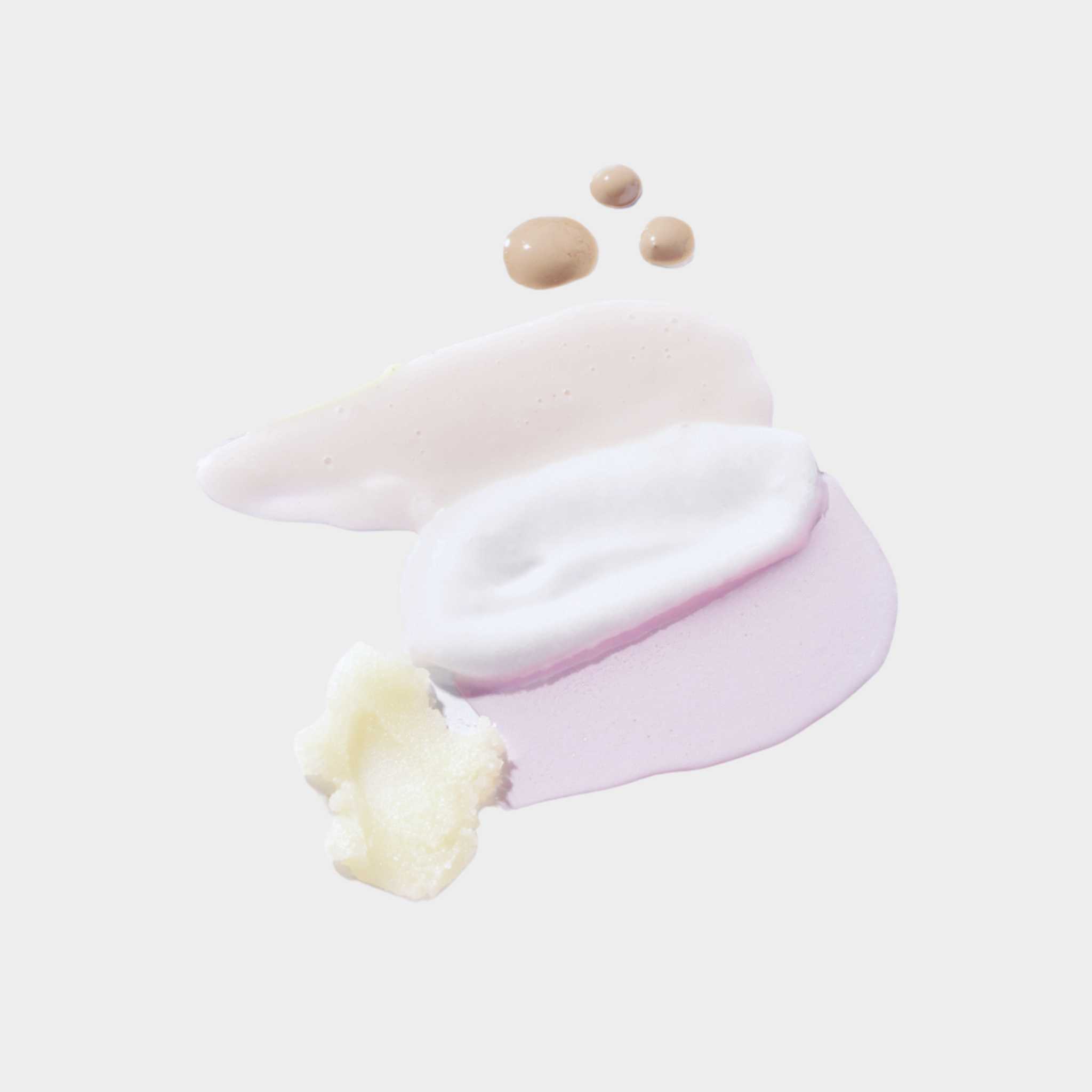Our never list
Ingredients we don't use
- Phthalates and parabens — Potential endocrine disruptors; some studies suggest effects on fertility and development. Several regulations already restrict or prohibit their use.
- Formaldehyde — Classified as a carcinogen in high concentrations and known to cause skin and respiratory irritation. Its use is strictly regulated.
- Oxybenzone and octinoxate — These filter UV rays, but are linked to coral bleaching and reef damage. Many regions have already banned them in sunscreens.
- Synthetic fragrances — Non-transparent blends that may contain multiple allergens and irritants. We avoid their use to protect your skin and the planet.
- Coal tar dyes — Some are linked to carcinogenicity and pose a risk of skin irritation.
- Talc — It can be easily inhaled and its link to ovarian cancer has generated controversy, although the evidence is still inconclusive.
- Sulfates (SLS, SLES) — Very effective cleansing agents, but tend to dry out skin and hair.
- Retinol — Although it is a powerful anti-aging active, it increases photosensitivity and can cause irritation.
- Hydroquinone — A proven depigmenting agent, but with possible side effects such as uneven hyperpigmentation.
- Methylisothiazolinone and methylchloroisothiazolinone — Preservatives associated with severe allergic reactions in sensitive skin.
- Microplastics — Synthetic particles that pollute oceans and marine life; they are not part of our formulas.
- Glycols and ethoxylated silicones — Slow-degrading compounds that can accumulate in the environment and water.
- Synthetic polymers and petrolatum derivatives — Low in biodegradability and high environmental impact in their production and disposal.
- Acrylates and ethanolamines — Persistent and potentially irritating; some may contain harmful impurities.
- Quaternary ammonium salts — Toxic to aquatic life when released into the environment.
- Ethoxylated derivatives (PEG, PPG, and 1,4-dioxane) — Used as emulsifiers or thickeners; may contain 1,4-dioxane, a potentially carcinogenic byproduct.
- Triclosan and triclocarban — Synthetic antibacterials linked to hormone disruption and bacterial resistance; common in soaps and deodorants.
- BHA (butylated hydroxyanisole) and BHT (butylated hydroxytoluene) — Synthetic antioxidants used to stabilize oils, associated with potential endocrine disruption and accumulation in the body.
- Perfluorinated compounds (PFAS) — Used to provide water- or oil-repellent properties; they are extremely persistent in the environment and bioaccumulate.
- Phenoxyethanol — Preservative widely used as an alternative to formaldehyde, but can cause irritation and, at high concentrations, systemic effects.
The mere presence of an ingredient doesn't always imply a high risk; it depends on the concentration, method of use, and regulatory assessments. However, at TEIA, we prefer to focus on safer and more sustainable alternatives.
At TEIA, we decided not to use these and hundreds of other ingredients because there is no conclusive research to confirm their safety. For some, there is already conclusive research on the harm they can cause.
If you have any questions about any of the ingredients we use or those we choose not to use, please contact us and we will be happy to answer your questions.


